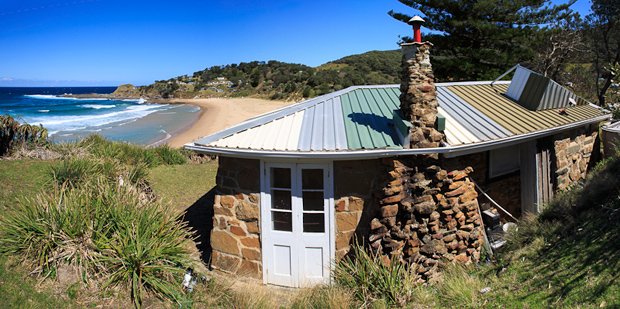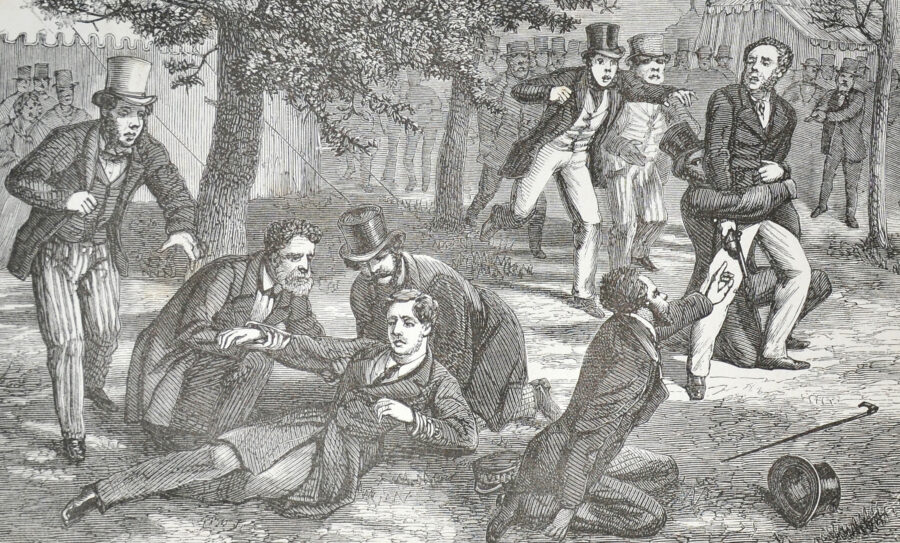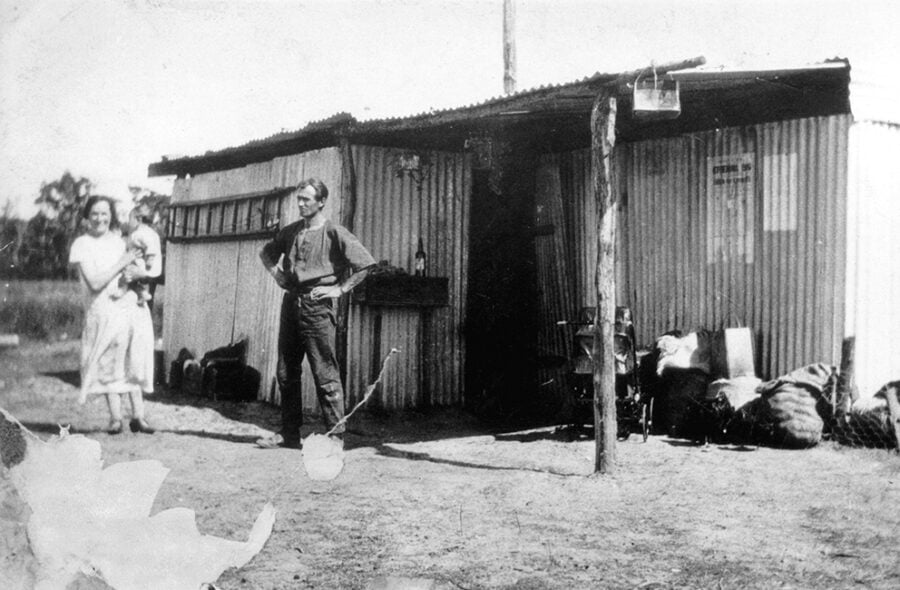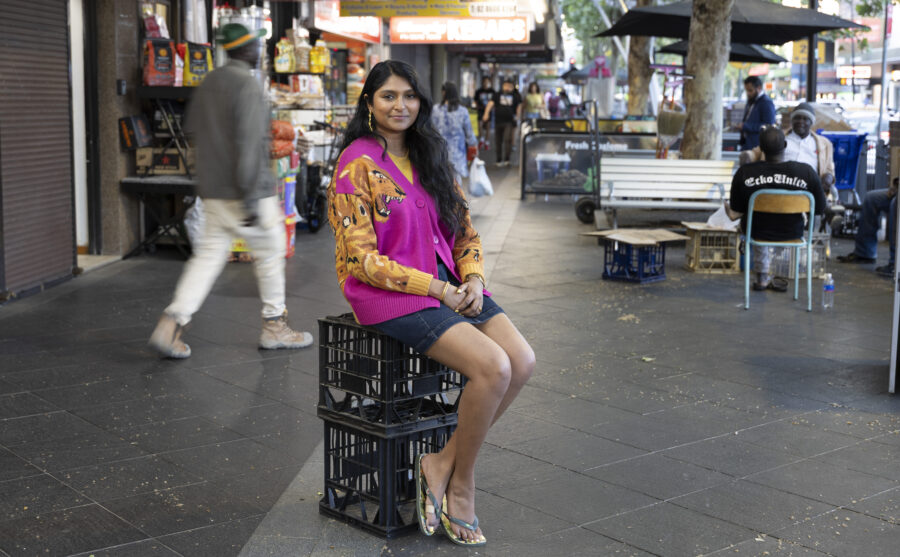Beach heritage shacks of Royal National Park

IN A REMOTE corner of NSW’s Royal National Park, beach huts lie amid the folds and foothills of lush Black Gin Gully, which rises above Little Garie beach. “Some shacks were built by the ocean so they could get the view. Others, like ours, are close to the creek,” says Billy Burn, 73, whose father-in-law, a miner from nearby Helensburgh, built a shack here in 1942. “It was great when the kids were little. We would fill two buckets with water and bring them back to wash the nappies.”
Inside, the shack is filled with 1940s technology: a bright-blue kerosene fridge, a lime-and-cream enamelled kerosene oven, a blackened metho burner and a row of old kerosene lamps hanging from nails. There’s 1950s bric-a-brac, too – a laminex table in sparkling yellow and carpet tiles on the floor – but these days there are solar panels on the roof. “The grandkids just come in and flick on the lights,” says Billy, smiling. “They don’t remember what it used to be like.”
There are 143 beach shacks in this section of the park, about 50km south of Sydney: 20 shacks at Little Garie, 95 at South Era and another 28 at Burning Palms. Most date back to the 1930s; they represent a moment in time, a long-since faded slice of Australian history. In the ’30s and ’40s, miners from Helensburgh, at the southern edge of the park, came to the coast looking for a weekend escape. Holidaymakers from Sydney trekked south too: surfers, bushwalkers and families looking for a cheap getaway.
Beach shacks: from basic living to holiday paradise
During the Great Depression, families lived there out of desperation, surviving on wild rabbits, fish and home-grown vegetables. At the time, pockets of land were still privately owned in the park. Holidaymakers paid two shillings a week (about $8 today) to erect tents and rough bark huts. Later, they built permanent cabins, usually with a main room and smaller bedroom, hastily constructed with nails and bits of weatherboard and finished off with corrugated iron, planks of driftwood, other jetsam and local stone.
For years, the shacks have been at risk of demolition. Some were abandoned, others were deliberately demolished under a controversial National Parks and Wildlife Service (NPWS) policy, which saw cabins removed if an owner died or rent fell into arrears.
A new, five-year licensing arrangement put forward in 2005 prompted the three communities of ‘shackies’ to challenge the NPWS in a court action led by Helen Voysey, president of the Coastal Cabins Protection League. After mediation in 2006, a 20-year licensing agreement was established.
In April 2012 the shacks were finally listed on the NSW State Heritage Register, a move supported by the NPWS and the shackies. They continue to pay rent to the NPWS, but the shacks remain in family ownership.
Heritage consultant Geoff Ashley, who assisted with heritage listing, says the protection will ensure their survival.
“Shacks are quite a rare type of building,” Geoff says. “They’re not just small houses. The way people live in them, in a temporary way, and the lifestyle they lead while they’re there, sets them apart.”
Beach shacks were once common along the NSW coast but have almost disappeared, thanks to development. Geoff says the heritage listing could lead to protection for other shacks, especially those in WA, which are threatened by a similar removal policy.
Warwick Hilton, now 91, built his shack at South Era in the Royal NP in 1937. It has been 10 years since he and his wife Joan, also 91, have tackled the steep walk down the bushy escarpment to the shack, but their three daughters, grandchildren and great-grandchildren continue to enjoy it.
Warwick says he was in his final year at Sydney Boys High School when he first experienced the shacks and decided to build his own:
“A friend invited me…down there. A lot of Helensburgh miners had built shacks there to catch a few rabbits and get fish, and so on. We stayed at one of these shacks and we immediately fell in love with the place, so we said we’d build one, too.”
They built it from bush poles, driftwood and galvanised iron. They had a kerosene fridge, a drip safe and a timber-and-canvas canoe they took into the surf. Weekend rations cost 6 shillings and fourpence (about $26 today) for steak and eggs, powdered milk, beer, bread and butter.
Today, some shacks are more modern, with laminate kitchens and electric fridges. Most now have solar panels. Each shack is painted a different colour: white, green, blue or yellow. But their exposed timber rafters are all jam-packed with the same thing – everything you’ll need for an Aussie beach holiday: fishing rods, boogie boards, board games and beer.
“Every shack reflects its owner’s taste and personality,” says Kerry McKenzie, 59, a wedding celebrant from nearby Heathcote. Her father-in-law built a shack at Little Garie in 1946, after visiting the area with the Maroubra Surf Club. He died two years ago and Kerry and her family share the pretty yellow shack with her sister-in-law’s family.
“To put into words what the place means is extremely difficult,” says Kerry. “We call it Garie Fever. Once here, you don’t want to leave.”
Read the full story in the Nov/Dec2012 issue of Australian Geographic.
RELATED STORIES




